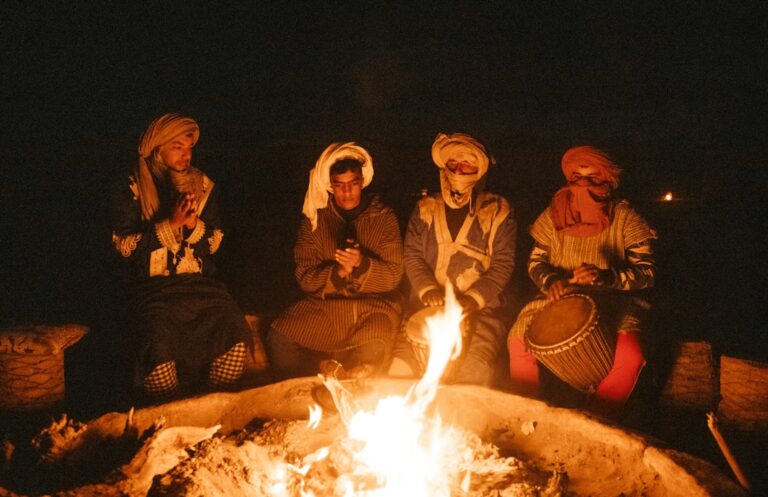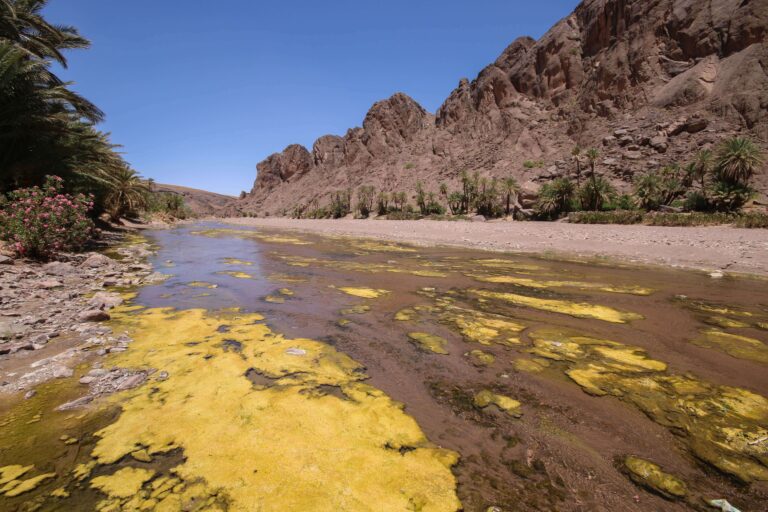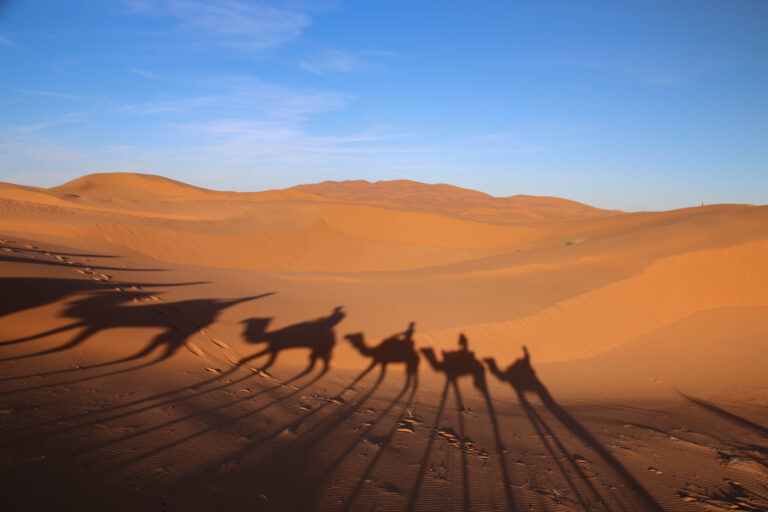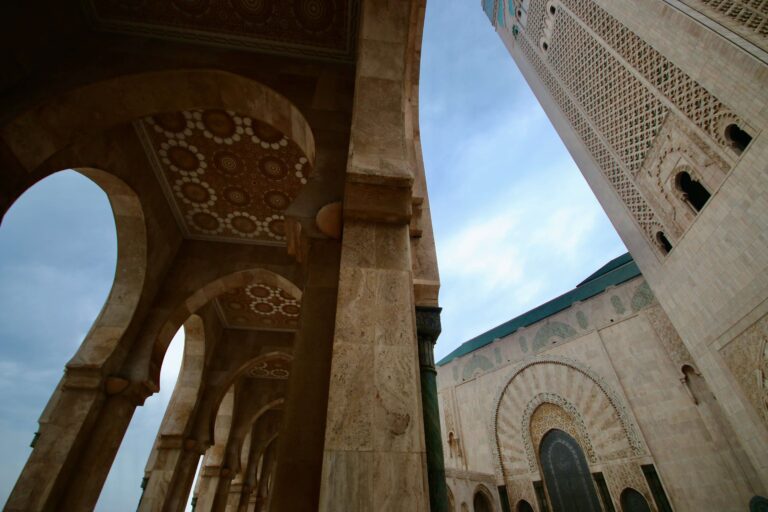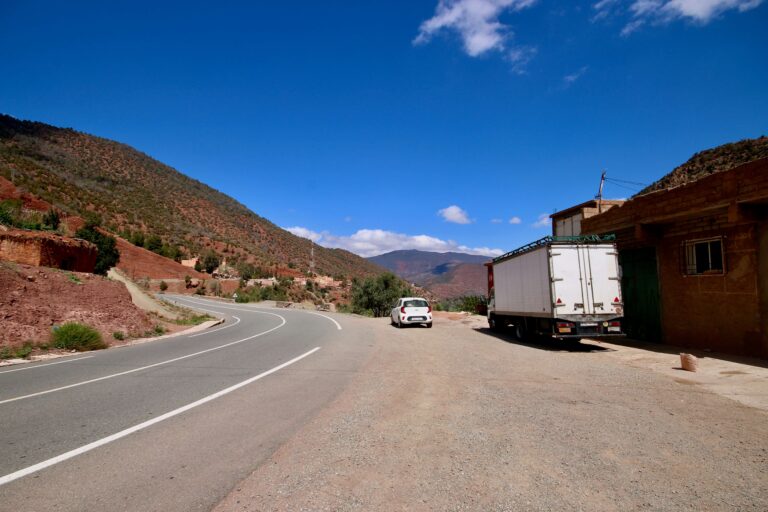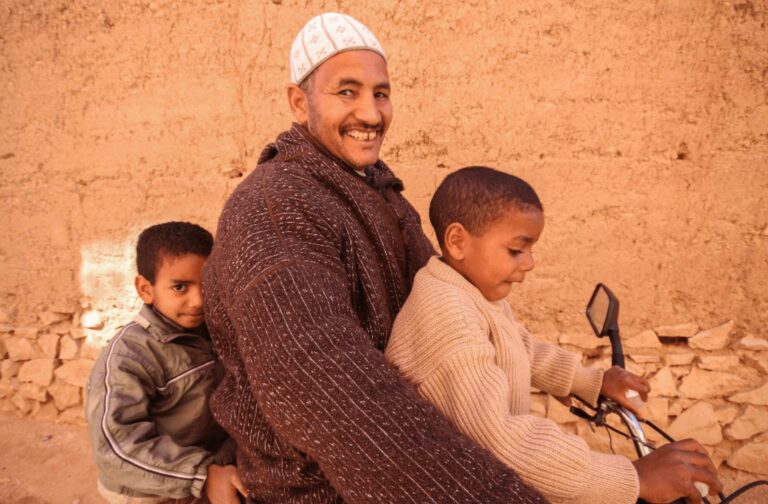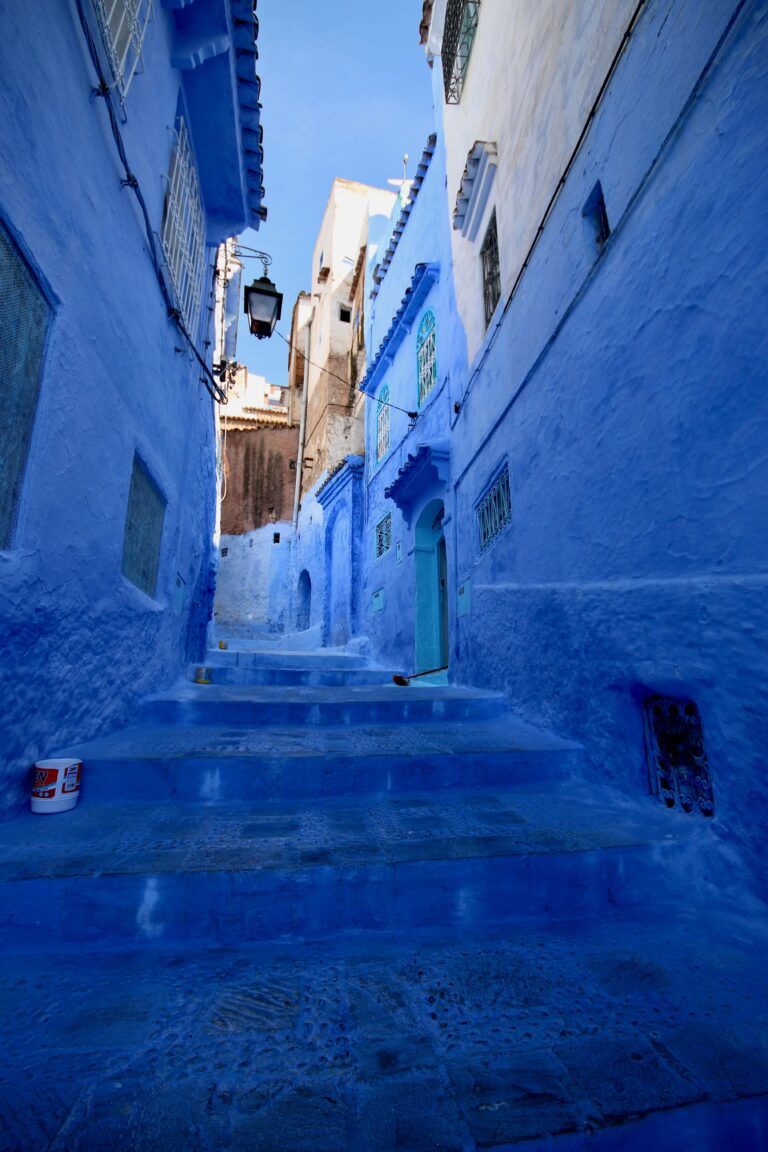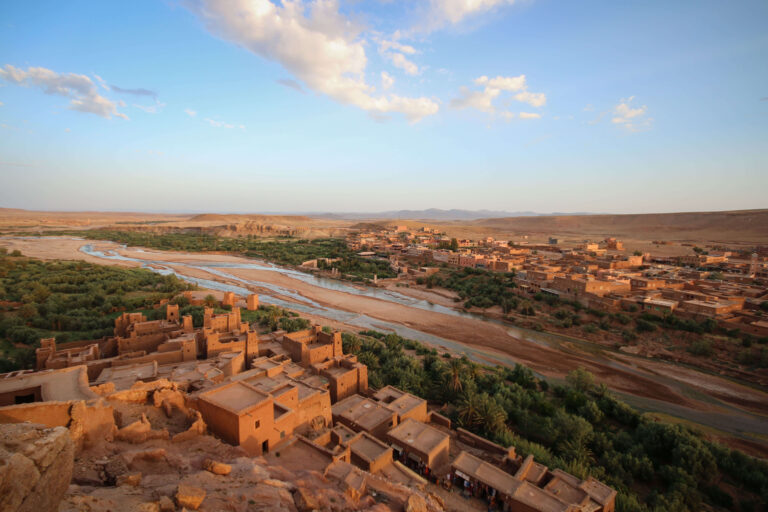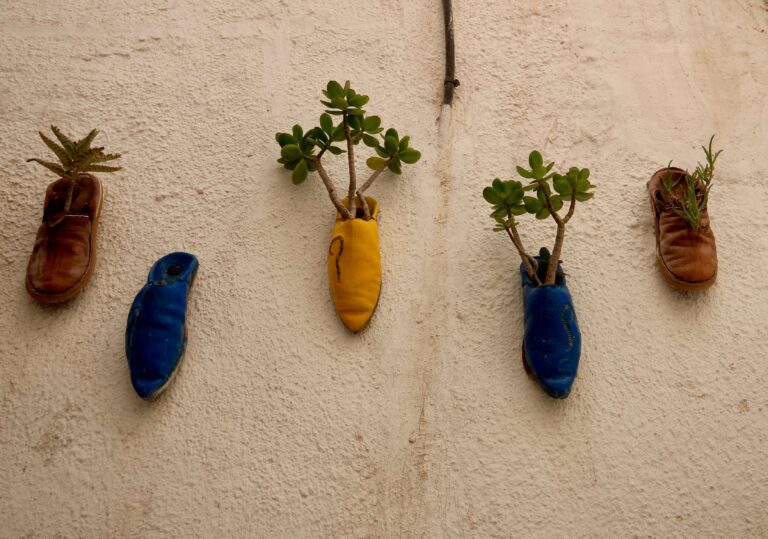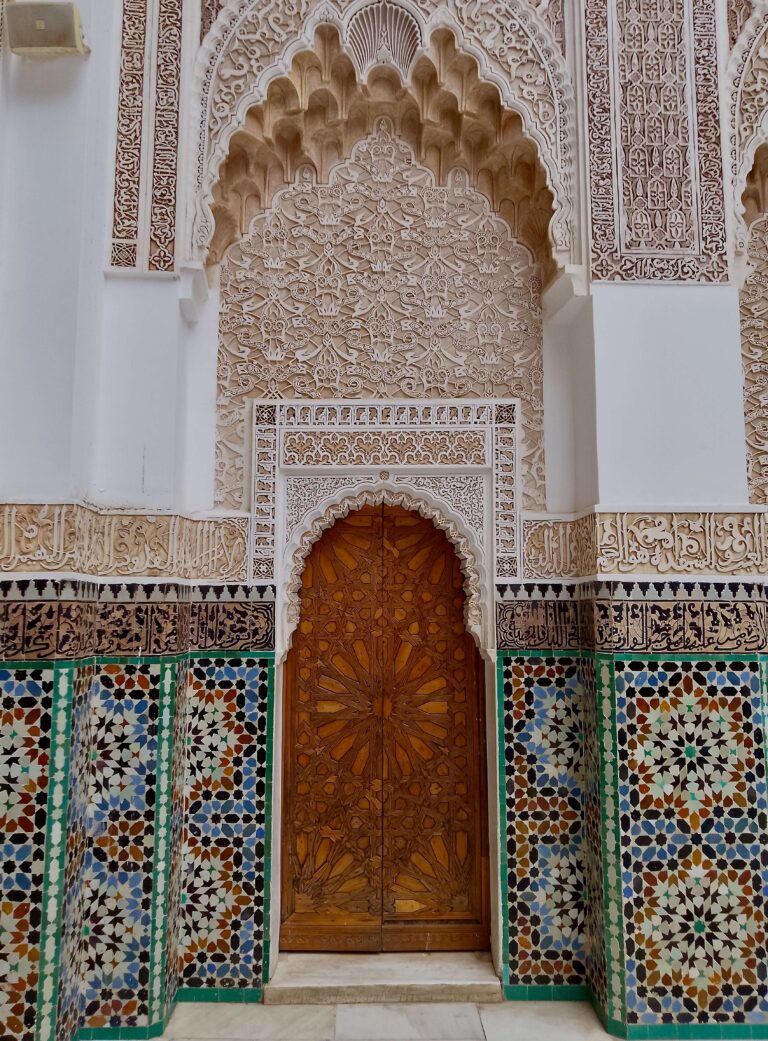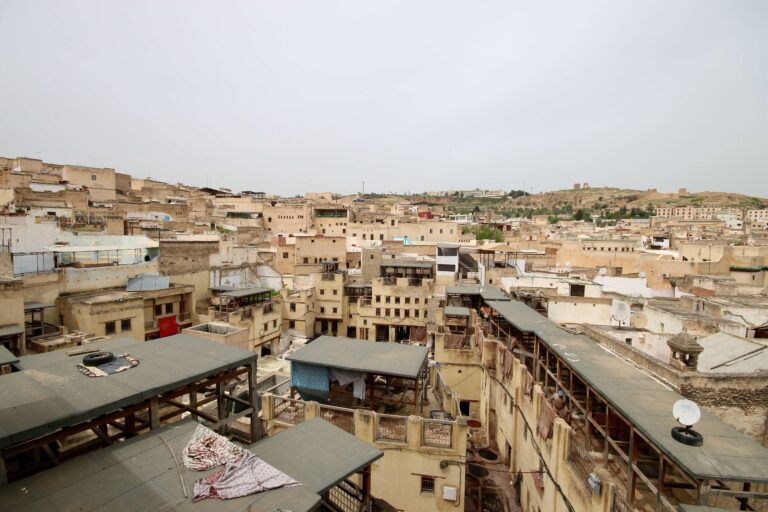Travelling to Morocco in March: Is it a Good Time to Visit?
Travelling to Morocco in March? Discover everything you need to know about visiting Morocco in the spring, from weather to crowds and where to go.
With spring in full swing, March is a wonderful month to visit Morocco. It’s one of my favourite times to be in the country.
During these weeks, the temperatures are perfectly warm during the day, often reaching the mid-20s Celsius (mid-70s Fahrenheit). This makes it an ideal time for both city sightseeing and outdoor recreation in this captivating North African nation.
That being said, the nighttimes can still be crisp and cool. Pack lots of warm layers if you’re travelling to Morocco in March. But, in my opinion, the temperature contrast is all part of the allure. I love enjoying the warm sunshine during the day, then getting rugged up at night (ideally beside an open fireplace).
In March, the tourist crowds that flood Morocco’s most popular cities and attractions during April and May have not yet arrived in full force. This means you can experience the architectural wonders of Marrakech and Fes with fewer people vying for the same photo opportunities.
The exception to this is if the Easter holidays happen to fall in March, bringing a noticeable uptick in visitors. Get your accommodation bookings locked in early if this is the case!
With the landscapes beginning to awaken from their winter slumber, March is an exceptional time to enjoy Morocco’s great outdoors. Budding trees and blooming flowers dot the rolling hills and mountain ranges, offering a feast for nature lovers.
The Sahara Desert is also at its best. You can expect idyllic daytime temperatures and crisp nights for enjoying the convivial atmosphere around the campfire.
In this article, I’ll explain what you can expect if you’re travelling to Morocco in March, from weather to events and the best places to visit.
If you’re focusing your travels on Marrakech, Fes, Agadir or Essaouira, click on the links to find detailed information about visiting each in March.
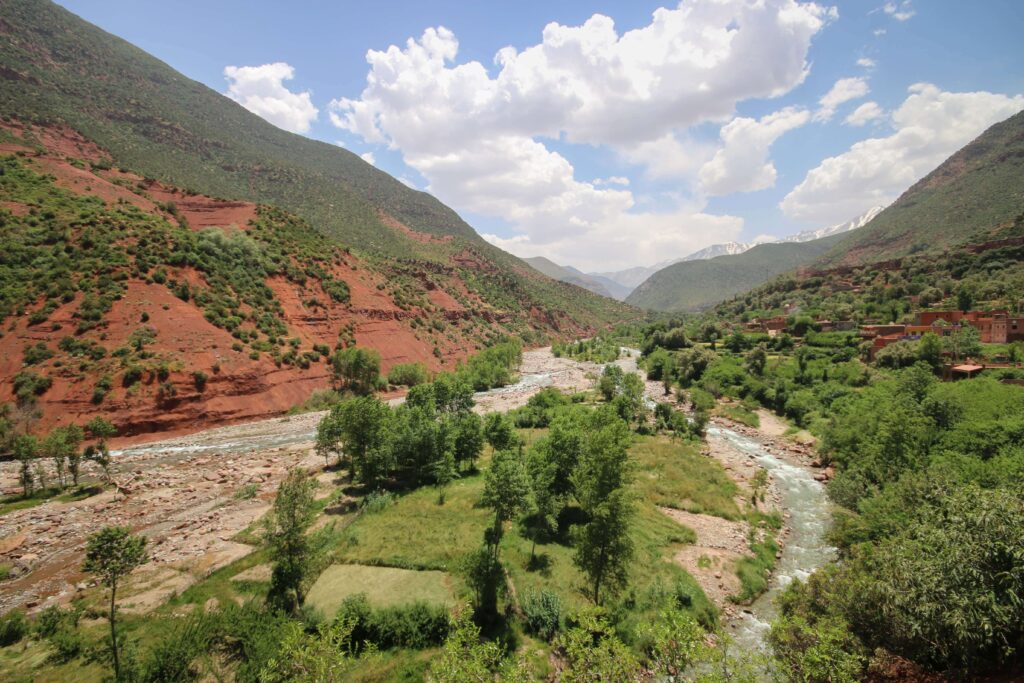
Disclosure: This article contains affiliate links, meaning I earn a small commission when you make a purchase. Affiliate links cost you nothing and ensure my content stays free!
Weather in Morocco in March
As winter’s chill begins to fade across Morocco, the transition into the warmer springtime season arrives earlier than in much of the Northern Hemisphere.
In Marrakech, the daily highs often reach into the low 20s Celsius (70s Fahrenheit). It’s perfect for exploring the city’s maze-like medina and colourful souks before the summer heat kicks in.
Further north, in the imperial city of Fes, the coastal port of Tangier and the blue-hued town of Chefchaouen, March temperatures tend to be slightly cooler. But they’re still pleasant enough for outdoor exploration if you want to travel to northern Morocco in March.
The arrival of spring does come with a trade-off – increased rainfall. March is considered one of the wettest periods in Morocco. While this may mean packing an umbrella or light jacket for protection against showers, the upside is that the precipitation breathes new life into Morocco’s often arid landscapes.
In response, the country’s desert gorges and mountains ignite with greenery and blossoming orchards. This is a particularly magical time to explore Dades and Todra gorges.
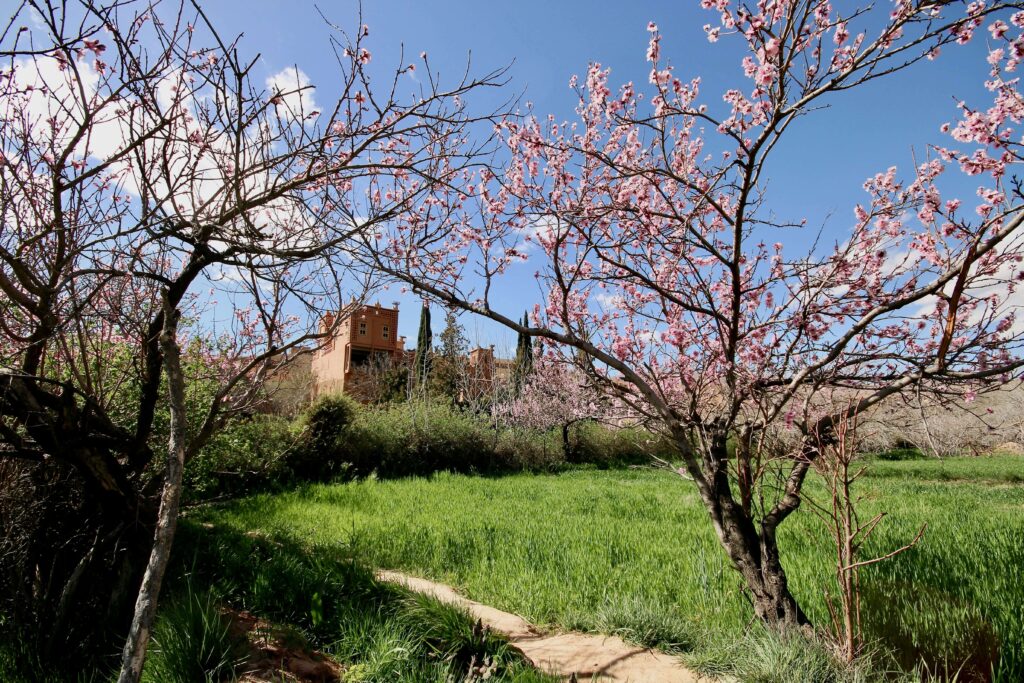
Is March a popular time to visit Morocco?
As the winter chill begins to fade and spring’s warmth starts to take hold, March is one of the best times to visit Morocco. The high tourist season has not yet reached its peak. But the country’s major cities and desert landscapes start to see a noticeable uptick in visitor numbers, compared to February at least.
This makes March an ideal time to visit Morocco if you want to feel a buzz in the air. But without having to contend with large crowds. You can explore the ancient medinas, haggle for treasures in the souks and trek through the High Atlas mountains, all with a greater sense of space and solitude.
It’s important to note that if the Easter holidays fall during March, a noticeable surge in holidaymakers descend on the country. If you’re travelling to Morocco during this period, don’t leave your bookings to the last minute!
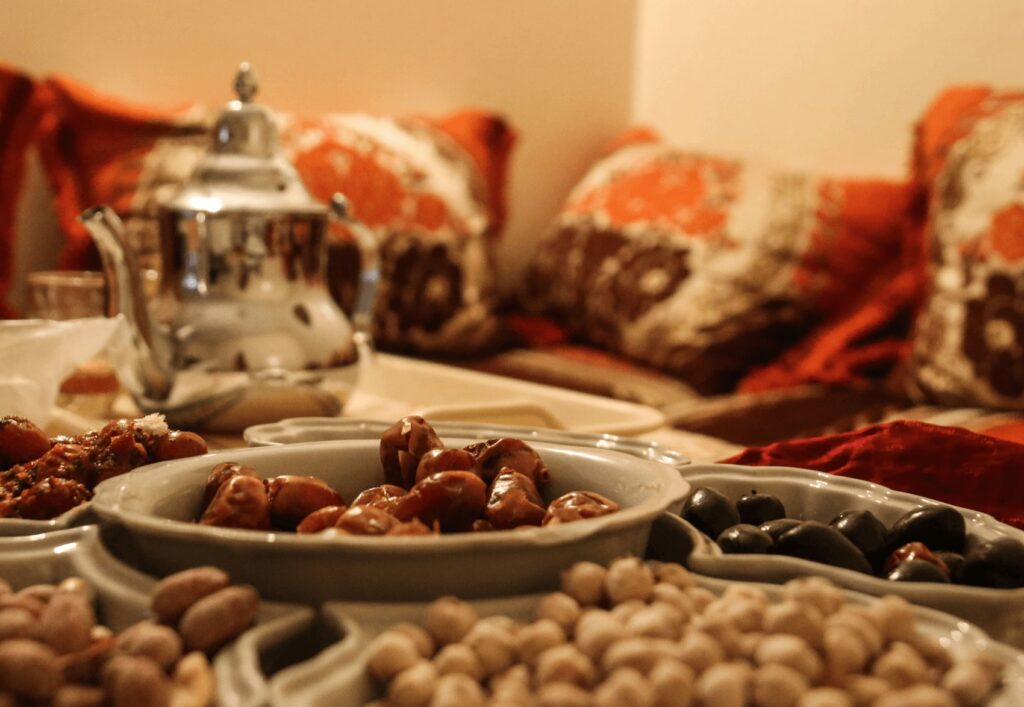
Festivals and events in Morocco in March
Ramadan
In 2026, Ramadan will fall between February and March and is observed by the majority of Morocco’s Muslim population. This holy month is a time of fasting (from dawn til dusk), prayer (multiple times a day) and deepening one’s connection to faith.
Following sunset, families gather together in the evenings to break their daily fasts. Sharing in one of these convivial meals is a highlight of any visit.
Afterwards, many people head out to meet up with friends. There’s a really lively atmosphere in Moroccan streets on Ramadan nights!
It’s worth keeping in mind that restaurants, stores and public spaces may have reduced opening hours during Ramadan and you’ll need to plan accordingly.
You can learn more about travelling to Morocco during Ramadan here.
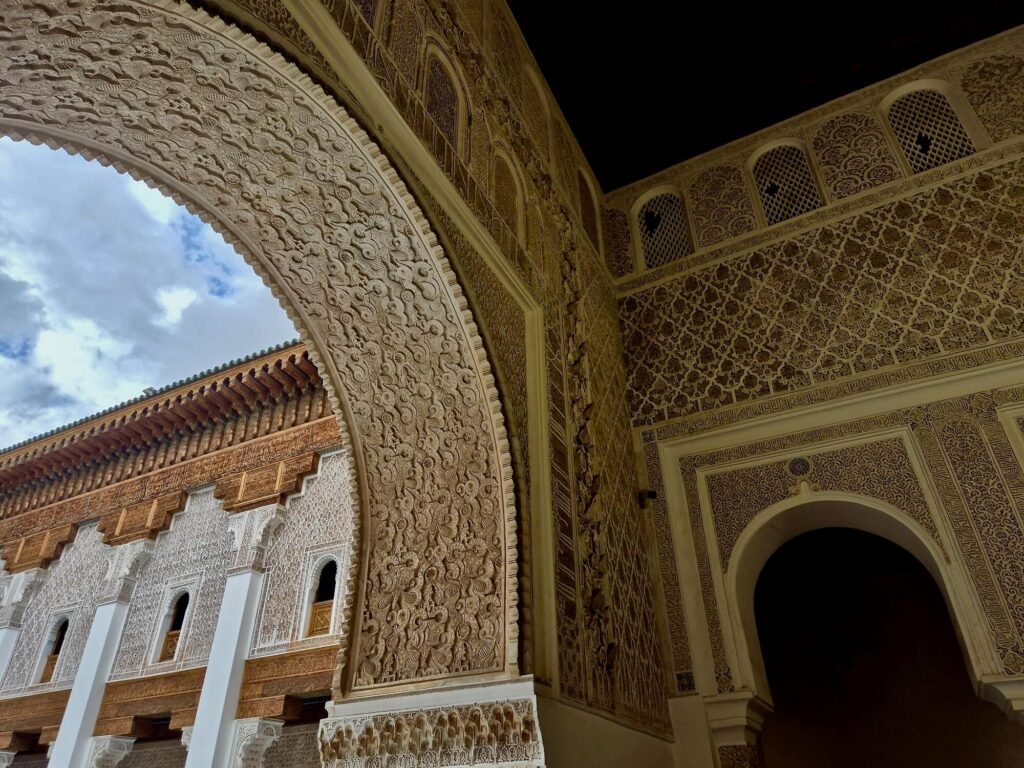
Where to go in Morocco in March
March is a wonderful time to visit Morocco’s southern Atlantic coast. Here, the weather is warm and pleasant with little to no rainfall.
In addition to the charming seaside city of Essaouira, known for its bustling fishing port and lively arts scene, consider hitting up the beachfront resort of Agadir.
Many in-the-know sun-seekers (particularly RVers) head further south to laid-back Mirleft and Sidi Ifni. Here, you’ll find Spanish colonial buildings and gorgeous beaches backed by ochre-hued cliffs.
The mild temperatures at this time of year make it an ideal opportunity to stroll along the sands and sample the locally caught seafood that is a specialty of the region.
Beyond the coast, March is also a wonderful time to explore the mountain landscapes of Morocco. These include the Rif Mountains in the north and the High Atlas range that carves through the country.
Top tip:
Travelling to Morocco in March? The gorges of Dades and Todra are both magnificent after the spring rains and can easily be combined with a visit to Ait Benhaddou.
While hikers should be prepared for the possibility of rain, the spring wildflowers add a whimsical touch to the already breathtaking scenery. If you’re venturing into the High Atlas, you may encounter snow at the higher elevations. Plus, skiing is usually still possible at Oukaïmeden and Michlifen in March.
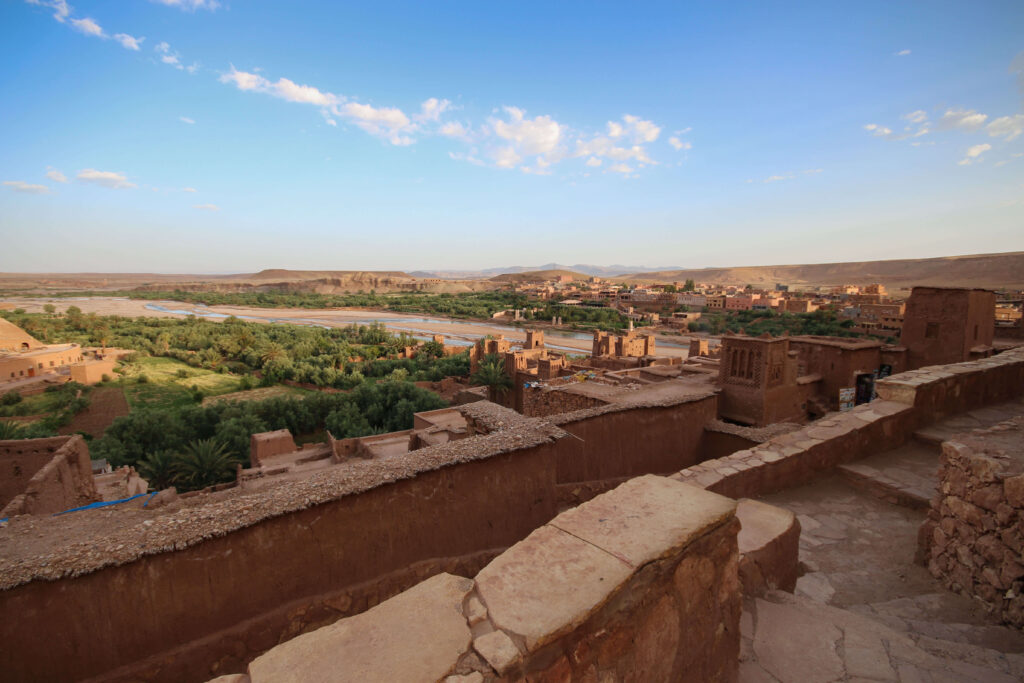
If you’re thinking about heading inland to the Sahara Desert, March is a particularly appealing time to visit. The weather is deliciously mild and the peak crowds are yet to arrive. Just be sure to pack warm clothing for the evenings, as the desert nights can still be quite chilly.
Hitting up Toubkal National Park, Ait Benhaddou and the Sahara Desert, this two-week itinerary from Essaouira is a perfect option for March visitors who want to explore on a self-driving trip.

PLAN YOUR TRIP WITH MY FAVOURITE RESOURCES:
Find hotels via Booking
Book tours and attractions via Viator or GetYourGuide
Find a rental car via Discover Cars
Book flights via Kiwi or Booking
Search for buses and trains via 12Go or Omio
Get travel insurance via SafetyWing
Buy a digital eSIM with Airalo
By purchasing through my links, you’ll be supporting my website at no additional cost to you
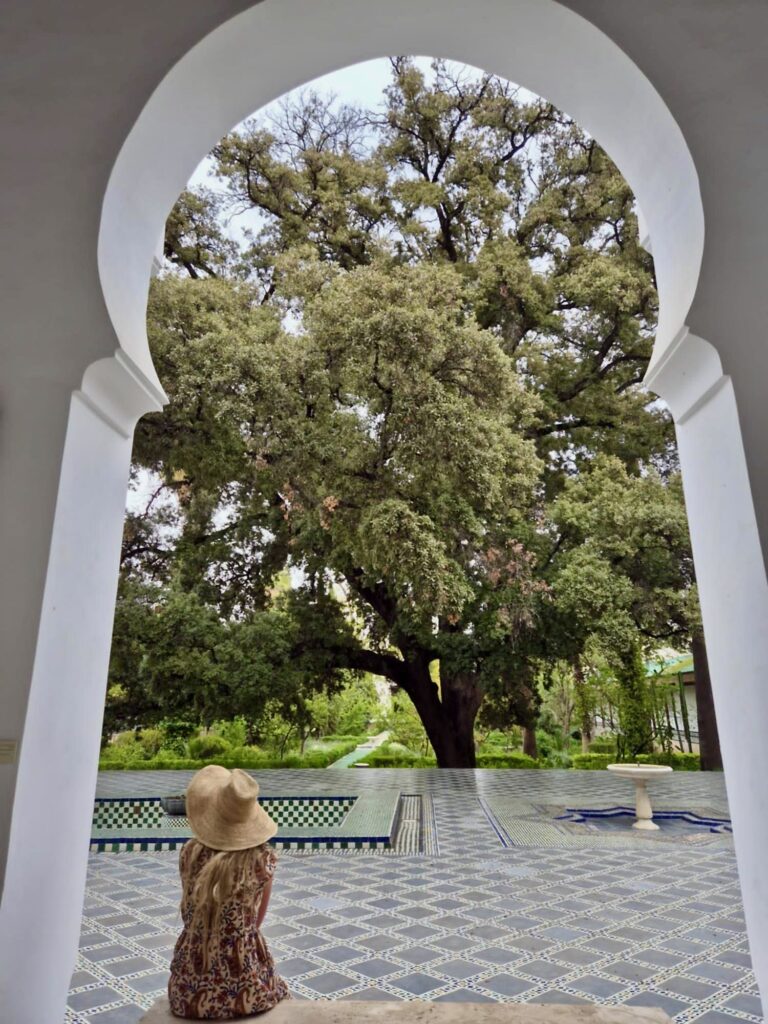
About Me
I’m Malika, a global traveller who first visited Morocco in 2014 before marrying a local and settling down in a little village on the Atlantic coast. Over the years, I’ve developed an intense love for Morocco, its incredible landscapes, storied cities and the exceptionally generous hospitality of its people.
Malika in Morocco is a place to share my years of experience exploring the country, from north to south and from the Atlantic Ocean to the Sahara Desert. As a resource for travellers visiting Morocco, I want to encourage others to experience this captivating destination the way they desire, whether that’s independently or under the expert guidance of local tour operators.
I believe strongly in supporting responsible and sustainable tourism initiatives while inspiring travel experiences that are life-impacting and mutually beneficial for both travellers and locals.
-
Meet the indigenous Amazigh people of Morocco
Often referred to as “Berbers”, the Amazigh people of Morocco are a diverse collection of ethnic groups Indigenous to North Africa. While they are concentrated primarily in the Maghreb region (Algeria, Libya, Mauritania, Tunisia and Morocco), they can also be found in northern Mali and northern Niger. Predating the arrival of Arabs in the region,…
-
Should I Get Travel Insurance For Morocco? Everything to Know
Whether you’re travelling to Morocco on a one-off trip or living a semi-nomadic lifestyle in the country, travel insurance should be a top priority before you head off. I’m someone who never travels abroad without travel insurance. It was drummed into me by my parents when I was young that it just wasn’t worth the risk. After…
-
Visiting Morocco’s Sahara Desert: Everything You Need to Know
Planning on visiting Morocco’s Sahara Desert? Discover everything you need to know to plan an incredible visit, from the best tours and self-drive itineraries to highly-rated desert camps. One of the most transformative experiences I’ve had in Morocco was spending a night under the star-studded sky of the Sahara Desert. Not only did I feel…
-
Renting a Car in Casablanca: Everything You Need to Know
Thinking about renting a car in Casablanca? Discover everything you need to know, from road conditions to safety issues and car hire costs in Morocco. Casablanca is Morocco’s main aviation gateway and the first port of call for many international travellers. So it makes sense that it’s also one of the best places to rent a car…
-
Renting a Car in Marrakech: Everything You Need to Know
Renting a car in Marrakech is a fantastic way to explore southern Morocco on your own terms. This is particularly ture if you want to visit the Sahara Desert, follow the Route of 1000 Kasbahs or venture into the spectacular gorges of Dades and Todra. While the train and bus networks in Morocco cover a…
-
Everything You Need to Know About Driving in Morocco
Planning a road trip in Morocco? Read on to discover everything you need to know about driving in Morocco, from road conditions to safety issues and renting a car. With its mix of bustling cities and vast open landscapes, Morocco offers a wide array of experiences behind the wheel. It’s an incredible destination for a…

